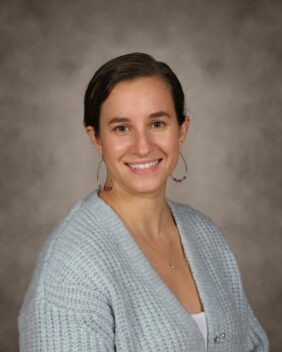PA Grant Report: Assistant Director of Educational Technology Isabelle Pisini
May 04, 2023
 Last summer I took on the exciting task of creating a computer science curriculum geared toward students with learning disabilities. There is currently no computer science curriculum designed specifically for students with LDs so I wanted to create one with our students’ needs in mind. With the uptick of interest in coding over the past few years, more than 50% of high schools in the United States now offer a computer science course in their school. I wanted to give the students at Mary McDowell Friends School that opportunity.
Last summer I took on the exciting task of creating a computer science curriculum geared toward students with learning disabilities. There is currently no computer science curriculum designed specifically for students with LDs so I wanted to create one with our students’ needs in mind. With the uptick of interest in coding over the past few years, more than 50% of high schools in the United States now offer a computer science course in their school. I wanted to give the students at Mary McDowell Friends School that opportunity.
Computer science is only offered as a senior elective at MMFS, so I compiled the main components of the whole New York State 9-12 computer science curriculum standards— computing systems, network and the internet, data and analysis, algorithms and programming, and the impacts of computing—into this year-long class. I decided to kick off the class with the history of computers, starting all the way back before computers were digital. We used the framework of the History of Computers to discuss advancements and inventions, vocabulary terms, and inequality and bias in technology.
The History of Computers is strategically combined with Building a Lexicon so that the new vocabulary and terminology discussed in class can be added as a resource throughout the year. The second unit takes the knowledge from the formation and structure of the lexicon and helps create a foundation for programming HTML & CSS. I chose HTML as the programming language because it is more forgiving than most other languages when it comes to writing it. Since students with dyslexia struggle with spelling, symbols, etc., it was important to find a programming language that would teach and challenge the students’ learning but would also allow for some instant feedback when an error occurred in the code. Students will use HTML and CSS to make a website from scratch and include the complexities of creating a database within their site.
The second half of the year will consist of learning about how computers work and applying that knowledge to building hardware and continuing with programming software. Students will build a video game device from scratch and then program a video game to load onto the device and play. Other units will consist of a group project to build a robot and program it to navigate a maze and perform tasks.
A topic I felt was important was assistive technology, since our students use it every day. This unit will discuss what assistive technology is and how we all use it, and will challenge the students to create a project that exhibits an assistive technology solution to a struggle.
The students will all be creating a final project for the class that is worth 25% of their grade. This will be introduced at the beginning of the second semester so they can begin to formulate an idea. They will create a work-flow timeline, task management, and scope for their projects. Last year we had students create a “What Character Are You” quiz, two videogames, a motorized toy stroller, and a website that helped hikers at three major national parks find where all the trash receptacles were. Students will have the freedom to choose anything that motivates and interests them.
Computer science is currently an elective for seniors, so if any of this seems interesting to you, make sure to spread the word!
Thank you, MMFS Parents Association, for making this curriculum come to life!